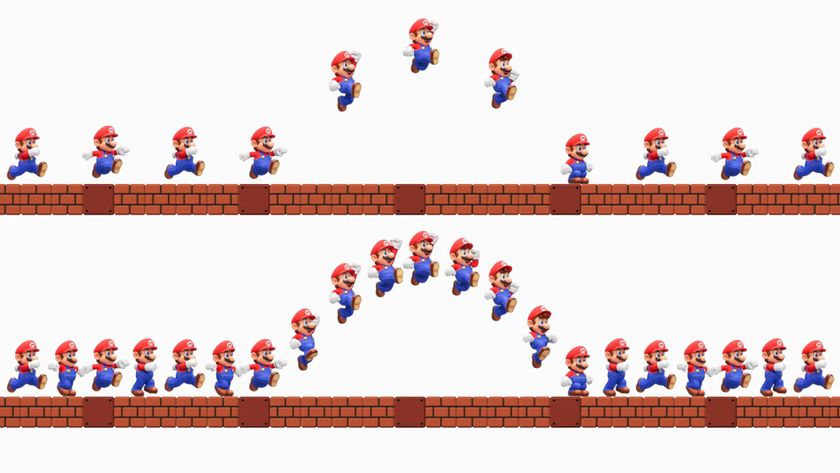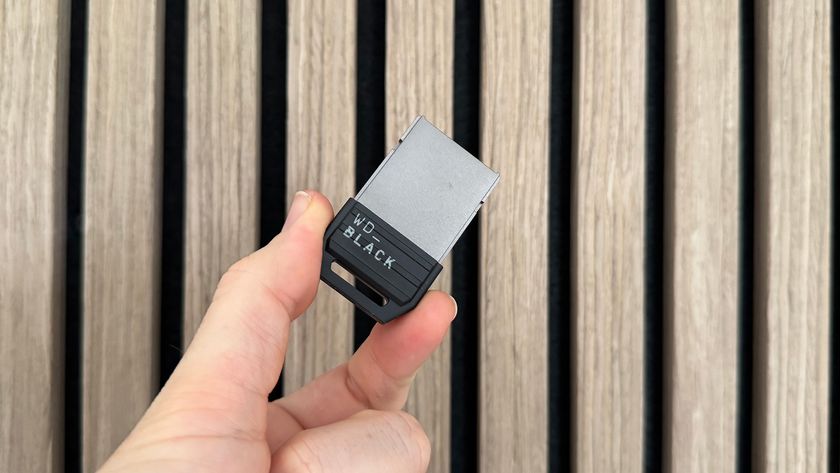Why you can trust 12DOVE
You're an RTS veteran. You've fought countless campaigns across innumerable battlefields, from the past, to the present, to way in the future. You've genuinely conquered worlds. You've sacrificed thousands of peons to your banner; forced a thousand tanks on doomed rushes. You're an uncaring, grizzled, ruthless commander. Tutorials? You don't need no stinking tutorials.
So, you find the Skirmish option on Perimeter's main menu irresistible. New toys for killing! You have no hesitation in trying it out, but within seconds you've quit, reeling away from the absurdity and the novelty.
Perimeter is delightfully strange, hugely ambitious yet entirely successful. It's a genuine eye-opener, pleasantly exposing just how narrow our strategic tastes have become. Codemasters (for supporting this) and the debut developer, KD Labs (for having the balls to pitch it in the first place) deserve a genuine pat on the back.
To war!
Perimeter stars three, beautifully implemented ideas that rock our strategy foundations. First, the worst. It's the eponymous Perimeter - an enormous defensive shield that can be triggered just by hitting the Enter key. When the shield's up, all structures within your base's radius are invulnerable to attack; any enemy vehicles that attempt to encroach will vaporise.
First the worst, second the best. This is an idea you'll fall in love with immediately - it's big, complicated and oh so applicable; applicable to every situation, applicable to every movement. Every decision you make in Perimeter is informed by your troops, what they are and what they can become. For the first time in an RTS game, a battle can be switched by altering your troops. No longer is the outcome to a situation determined before the soldiers exchange their first shot. If you're in trouble, there's always a fighting chance; a chance to melt down your battered charges and remake them in a new image - from tanks, to robots, to soldiers, to enormous eyeballs on sticks and all the way back again.
It works like this. You start off able to build three basic units: soldiers, technicians and officers, preferably in lots of ten or more. Every other unit within the game 'costs' a certain number of these base units. For example, a sniper, the aforementioned laser-shooting retina, 'costs' three officers to create, while an R-Projector costs six soldiers and three technicians.
Now this sounds enormously fiddly, and that's because Perimeter doesn't handle troop control like a typical RTS. Instead of ordering individual units around, all your troops move, form and reform en masse. Think of them as a single pool of gelatinous goop that follows your orders. If you want to create a second pool, to have one group of tanks flinging missiles into defensive positions while another taps the Perimeter shield, for example, then you have to build a further structure - a command centre, one for each additional squad.
This is interesting. By limiting your control over individual units, KD-Labs have actually exposed more strategy. The rock/paper/scissors/thermonuclear device structure that developers love to talk about but nearly always get wrong is here, working before your very eyes.
Early skirmishes prove disastrous, because you're unfamiliar with what your troops can do. But then you start playing tricks, start experimenting, and suddenly you're in heaven. You send a couple of subterranean tanks underground into the enemy's base. Then, with a single mouse-click they're transformed. They're now helicopters, raining down laser fire. They retreat, drawing out the defenders. Change back to the diggers for a clean getaway.
First the worst, second the best, third the one with the hairy chest. This final idea could literally rock the foundations of real-time strategy. The terrain in Perimeter is mutable, destructible, changeable, diggable. It's both your enemy and your friend. With a few sweeping arcs of the mouse, you can flatten it right out, or dig deep ditches, fortifications against the encroaching enemy, real and imagined.
Problems are minor: the only real criticism we have is that the vertiginous peaks and troughs have little effect on the movement speed of your troops. The landscape between bases is dead ground - there for the taking, but little else.
So now you understand. You take a second stab at the Skirmish mode. And you love it. And then the genius hits you: you're familiar with the intricacies, but you're still playing. You've discovered how it works, but you're still finding new ways to make it work. With these three innovations, Perimeter blows most traditional RTS games out of the water. There are so many unexpected options for attack, more ways to defend, more ideas to experiment with than you'd think possible. It's an enormous, gloopy toolkit of war. And we love it.
Perimeter is out now on PC
More info
| Platform | "PC" |

Nintendo Switch 2 will offer 4k resolution when hooked up to TV, making it Nintendo's most powerful console yet

Nintendo Switch 2 features a new game sharing system similar to Valve's own Steam Families, and it's compatible with the OG Switch

Switch 2 doesn't have an OLED screen, but its 1080p 120fps LCD with "approximately double the pixels" of Switch 1 might be worth the trade-off










